Fitting doors and drawers
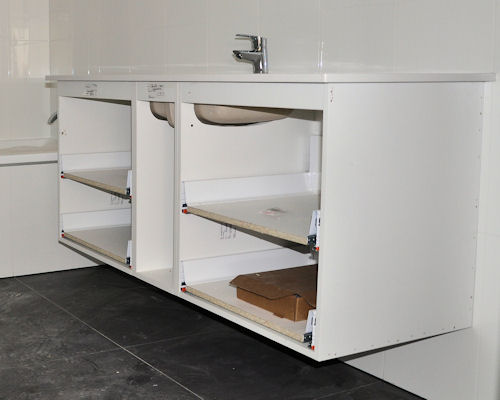 Audio for slide 1 (mp3 |6|KB)
Audio for slide 1 (mp3 |6|KB)
However, it's common for at least some components to be removed when the cabinets are delivered to the site.
At any rate, you may need to remove doors and drawers when you're installing the carcases and fixing them in position.

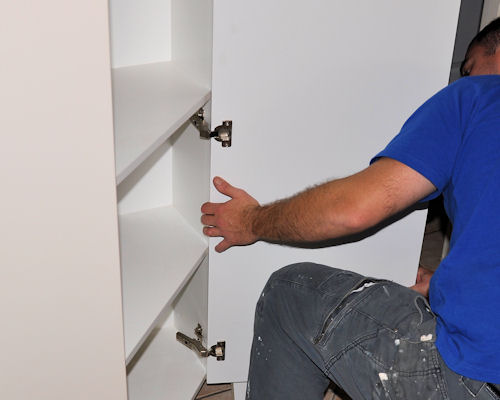 Audio for slide 2 (mp3 |6|KB)
Audio for slide 2 (mp3 |6|KB)
Doors
If the doors use two-piece concealed hinges, they can be re-attached by clipping the hinge arm onto the mounting block and securing it in position.
You'll need to check the clearance gaps and alignment of the doors as you go. We covered this process in detail in the lesson: 'Doors' from the unit Adjusting cabinets on-site.

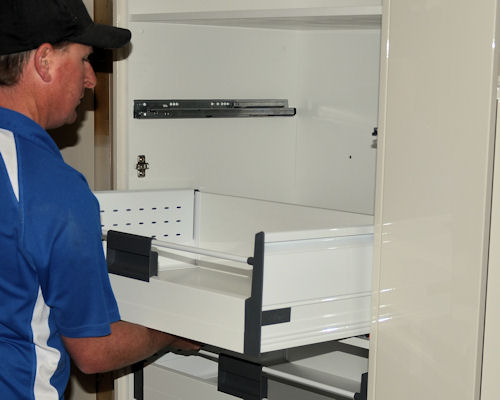 Audio for slide 3 (mp3 |6|KB)
Audio for slide 3 (mp3 |6|KB)
Drawers
When the drawers are replaced, it should be a simple matter of sliding them back onto their runners. However, it is possible that some re-adjustments will need to be made, particularly to the drawer fronts if they don't line up or the gaps are uneven.
This process is covered in detail in the lesson: 'Drawers' from the unit Adjusting cabinets on-site.

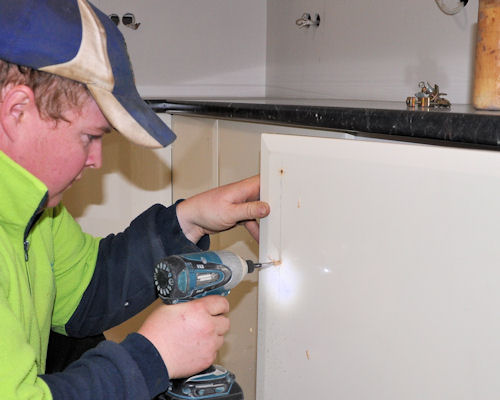 Audio for slide 4 (mp3 |6|KB)
Audio for slide 4 (mp3 |6|KB)
Handles
If the doors and drawers have handles, you can fit them once the doors and drawer fronts have been properly aligned. On floor cabinets the handles should be positioned near the top of the doors, and on overhead cabinets they should go near the bottom. If the cabinet is at eye level, the handles can be closer to the centre.
Most door handles are set in between 25 mm to 50 mm from the side of the door, but the final decision will depend on the design of the handle and client's preference.

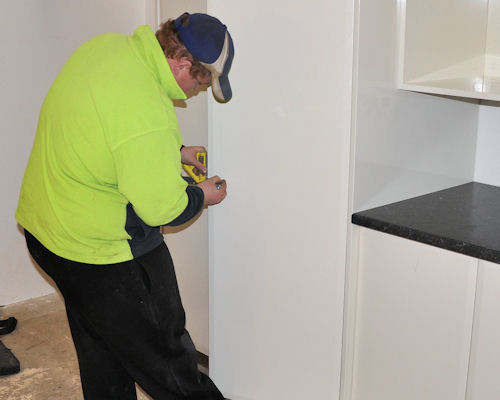 Audio for slide 5 (mp3 |6|KB)
Audio for slide 5 (mp3 |6|KB)
Mark the centre points for the screw holes by measuring down from the top of the door (or up from the bottom) and then in from the side.
If you're putting handles on a lot of doors, it's best to make up a template or jig to transfer the measurements quickly. Some installers use the simple method of setting the blade on a combination square to the longest length required, and then taking off the other measurements from the markings on the rule.

Learning activity
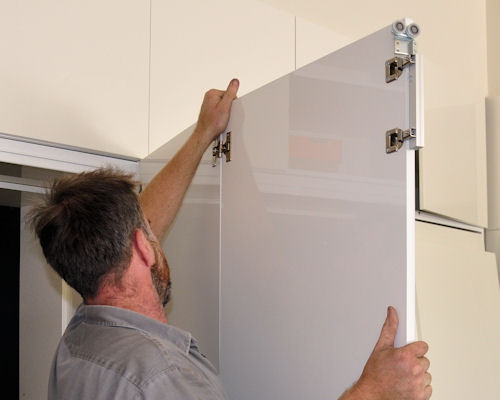 Audio for slide 6 (mp3 |6|KB)
Audio for slide 6 (mp3 |6|KB)
Depending on the types of hinges and drawer slides you're using, there may be other items of hardware that also need to be fitted. These could include door catches and soft close mechanisms.
What hardware items do your clients ask to be fitted to doors and drawers? Write down the names of the components and their manufacturers, and provide a brief description of what they do. Share your answers with your trainer and other learners in your group.


